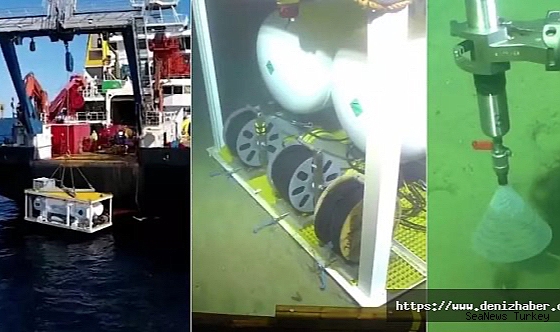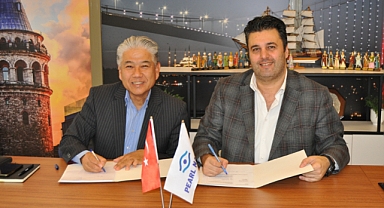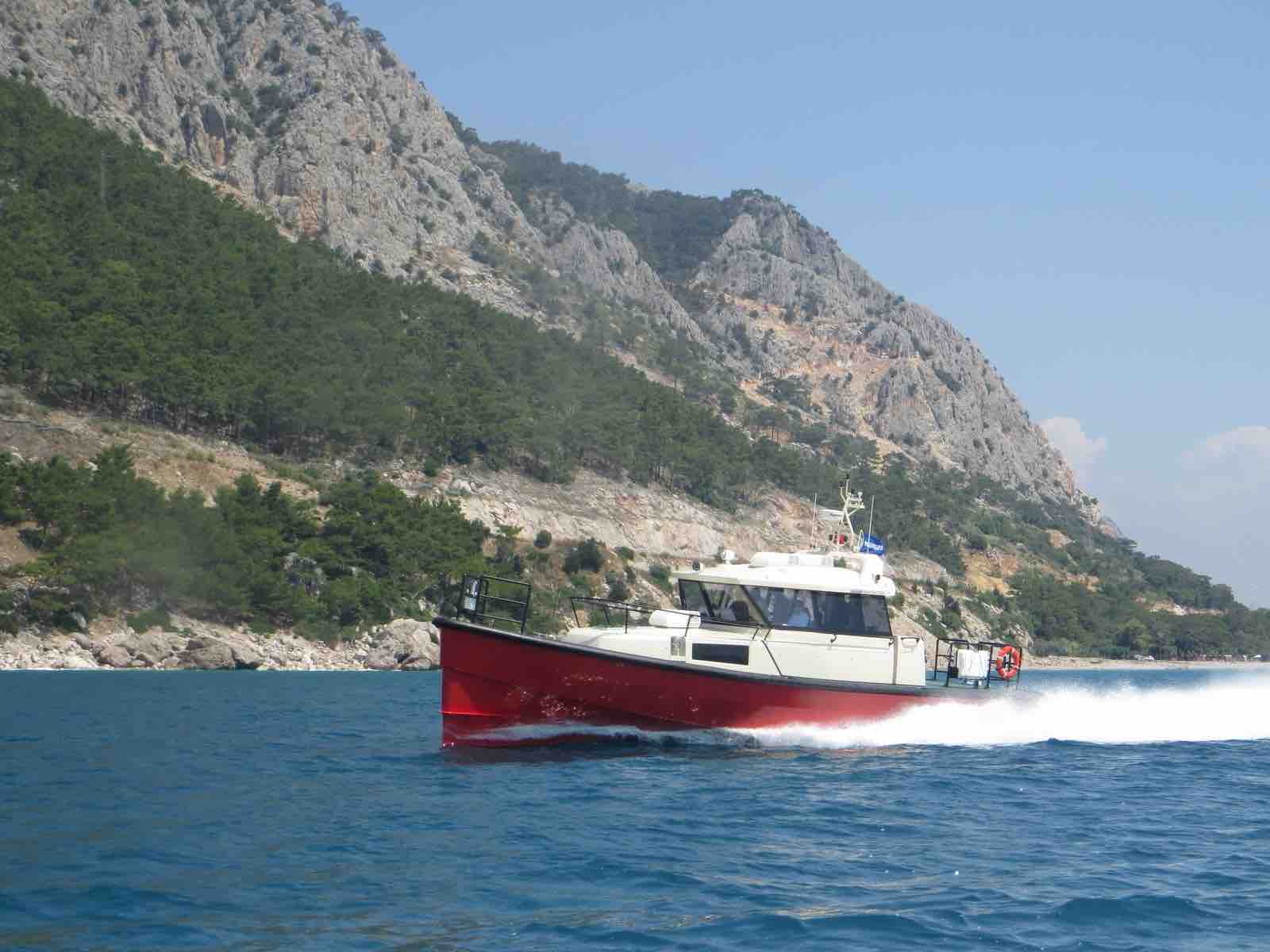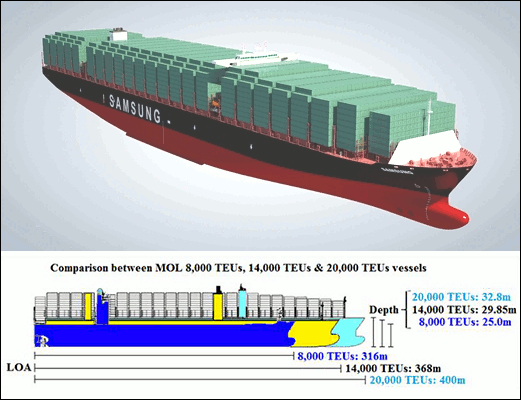The device, which absorbs 98 percent of CO2 gas from seawater, has been successfully testedScientists at the National Oceanic Science Center (NOC), established in Great Britain, successfully tested a device that cleans the carbon dioxide (CO2) gas accumulated in seawater and stores it in special chambers.
Scientists at the National Oceanic Science Center (NOC), established in Great Britain, successfully tested a device that cleans the carbon dioxide (CO2) gas accumulated in seawater and stores it in special chambers.The device, which contains airtight tubes, sensors and robots connected to these devices, can store 98 percent of the CO2 gas cleaned from sea and ocean waters with almost no leakage.Significant success was achieved in the experiments carried out by NOC researchers at a depth of 120 meters in the sea. During 11 days, 640 kilos of CO2 gas was cleaned from the sea with special vacuum and filter systems, and this poisonous gas was stored in special cylinder-shaped tubes.The aim of the experiment, conducted off the coast of Aberdeenshire, Scotland, is to clean and store a large amount of CO2 gas from the seas and oceans and to set a standard worldwide by making it a commercial enterprise.The principal investigator of the NOC responsible for the project, Prof. Dr. Douglas Connelly stated that the experiment was conducted three meters below sea level to test whether new technologies for detecting carbon would be successful.Connelly stated that previous experiments in 2019 showed that the arrangement of underwater carbon tanks was cost-effective and reliable. "We wanted to show that we can easily detect any gas leak that occurs in this experiment. We want to push the limits of what we can do. We can build vehicles that government agencies can use to clean up CO2 gas from the seas and oceans." he said.Stating that studies have been carried out to clean carbon dioxide gas from the seas for the last 20 years, Connelly said, "This method works. More than 1 million tons of CO2 gas has been cleaned annually in the last 20 years. With these latest studies, we want to show people and lawmakers that this method is reliable. "All of the IPCC reports of the Panel on Change identify carbon capture and storage as an important mitigation strategy. It's actually a very effective way of addressing climate change. It gives us an opportunity to reduce some of the CO2 increase we currently have before we move to a world where we don't produce CO2." he said.Professor of Climate Change and Environment at Imperial College London, Dr. Ajay Gambhir underlines that many states, including developed countries, cannot reach the targeted emission rates and that carbon capture projects are needed to reduce the amount of carbon in the atmosphere."The evidence we have shows that 98 percent of CO2 can be stored in these storage facilities for 10,000 years, provided the landfills are well organized and monitored," said Gambhir. We have also calculated scenarios such as. We are currently continuing to monitor any landfill leaks." he said.Prof. dr. Connelly stated that they have now reached the level where 40 million tons of CO2 can be stored per year. tons of CO2 footprints," he said.Although NOC scientists state that such studies are very important, they say that what needs to be done is to reach the CO2 values that the states promise and are obliged to comply with.
Scientists at the National Oceanic Science Center (NOC), established in Great Britain, successfully tested a device that cleans the carbon dioxide (CO2) gas accumulated in seawater and stores it in special chambers.The device, which contains airtight tubes, sensors and robots connected to these devices, can store 98 percent of the CO2 gas cleaned from sea and ocean waters with almost no leakage.Significant success was achieved in the experiments carried out by NOC researchers at a depth of 120 meters in the sea. During 11 days, 640 kilos of CO2 gas was cleaned from the sea with special vacuum and filter systems, and this poisonous gas was stored in special cylinder-shaped tubes.The aim of the experiment, conducted off the coast of Aberdeenshire, Scotland, is to clean and store a large amount of CO2 gas from the seas and oceans and to set a standard worldwide by making it a commercial enterprise.The principal investigator of the NOC responsible for the project, Prof. Dr. Douglas Connelly stated that the experiment was conducted three meters below sea level to test whether new technologies for detecting carbon would be successful.Connelly stated that previous experiments in 2019 showed that the arrangement of underwater carbon tanks was cost-effective and reliable. "We wanted to show that we can easily detect any gas leak that occurs in this experiment. We want to push the limits of what we can do. We can build vehicles that government agencies can use to clean up CO2 gas from the seas and oceans." he said.Stating that studies have been carried out to clean carbon dioxide gas from the seas for the last 20 years, Connelly said, "This method works. More than 1 million tons of CO2 gas has been cleaned annually in the last 20 years. With these latest studies, we want to show people and lawmakers that this method is reliable. "All of the IPCC reports of the Panel on Change identify carbon capture and storage as an important mitigation strategy. It's actually a very effective way of addressing climate change. It gives us an opportunity to reduce some of the CO2 increase we currently have before we move to a world where we don't produce CO2." he said.Professor of Climate Change and Environment at Imperial College London, Dr. Ajay Gambhir underlines that many states, including developed countries, cannot reach the targeted emission rates and that carbon capture projects are needed to reduce the amount of carbon in the atmosphere."The evidence we have shows that 98 percent of CO2 can be stored in these storage facilities for 10,000 years, provided the landfills are well organized and monitored," said Gambhir. We have also calculated scenarios such as. We are currently continuing to monitor any landfill leaks." he said.Prof. dr. Connelly stated that they have now reached the level where 40 million tons of CO2 can be stored per year. tons of CO2 footprints," he said.Although NOC scientists state that such studies are very important, they say that what needs to be done is to reach the CO2 values that the states promise and are obliged to comply with.










